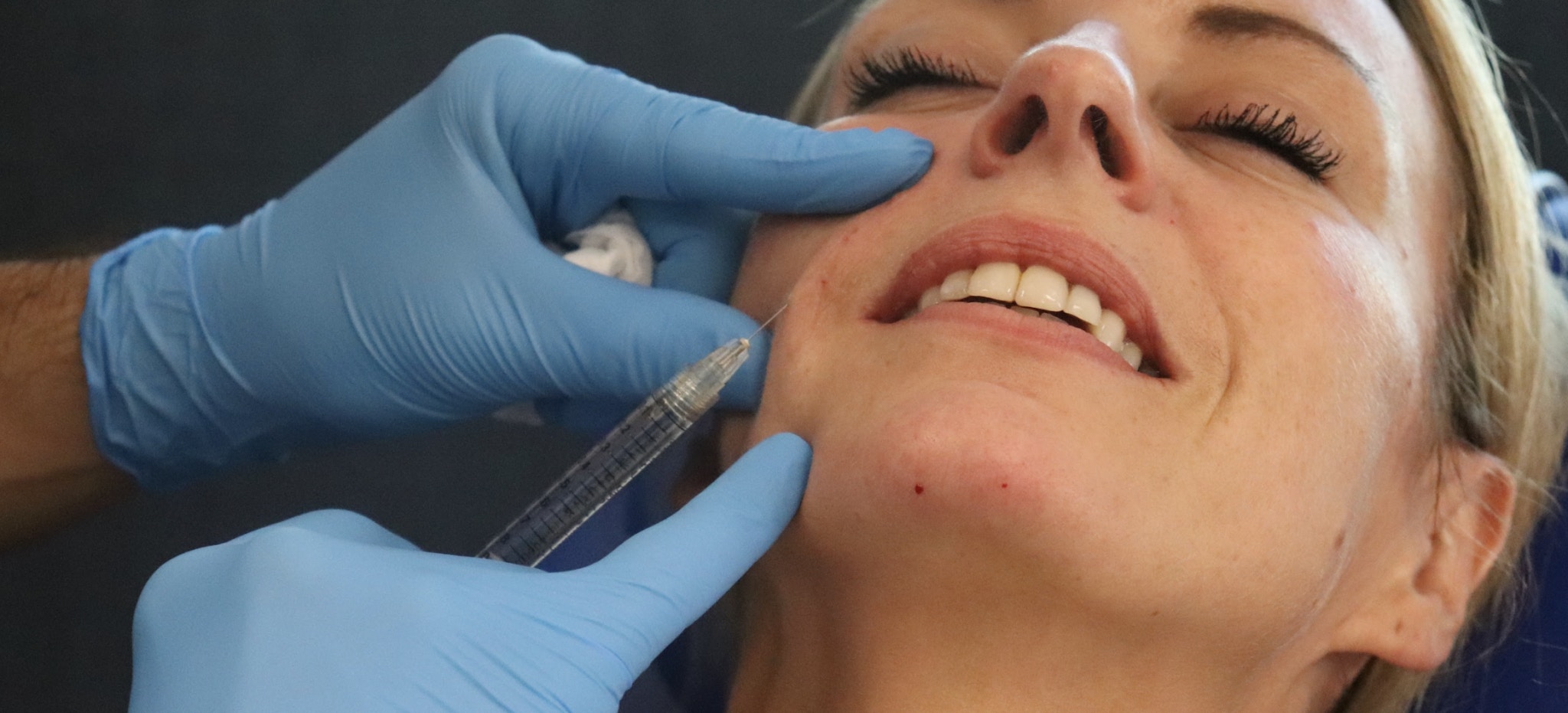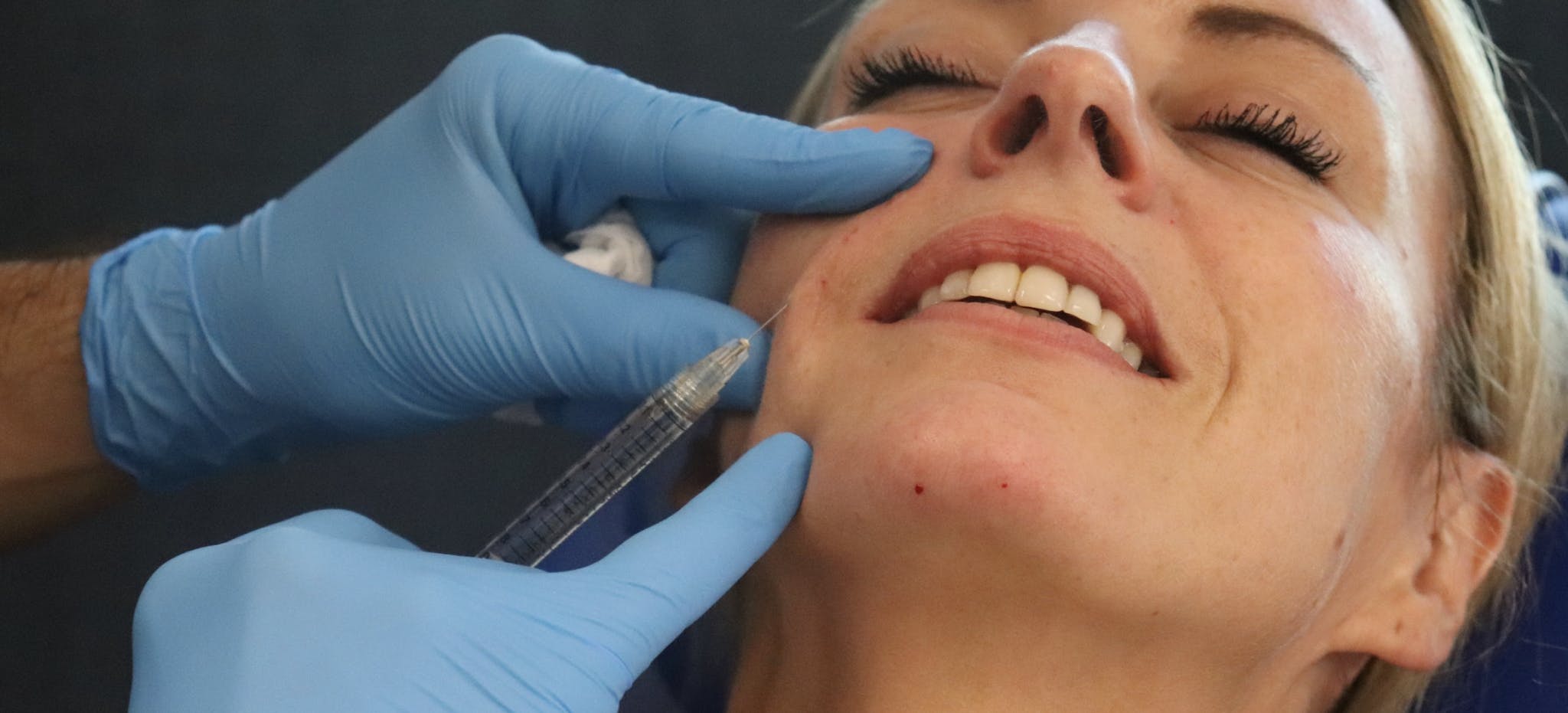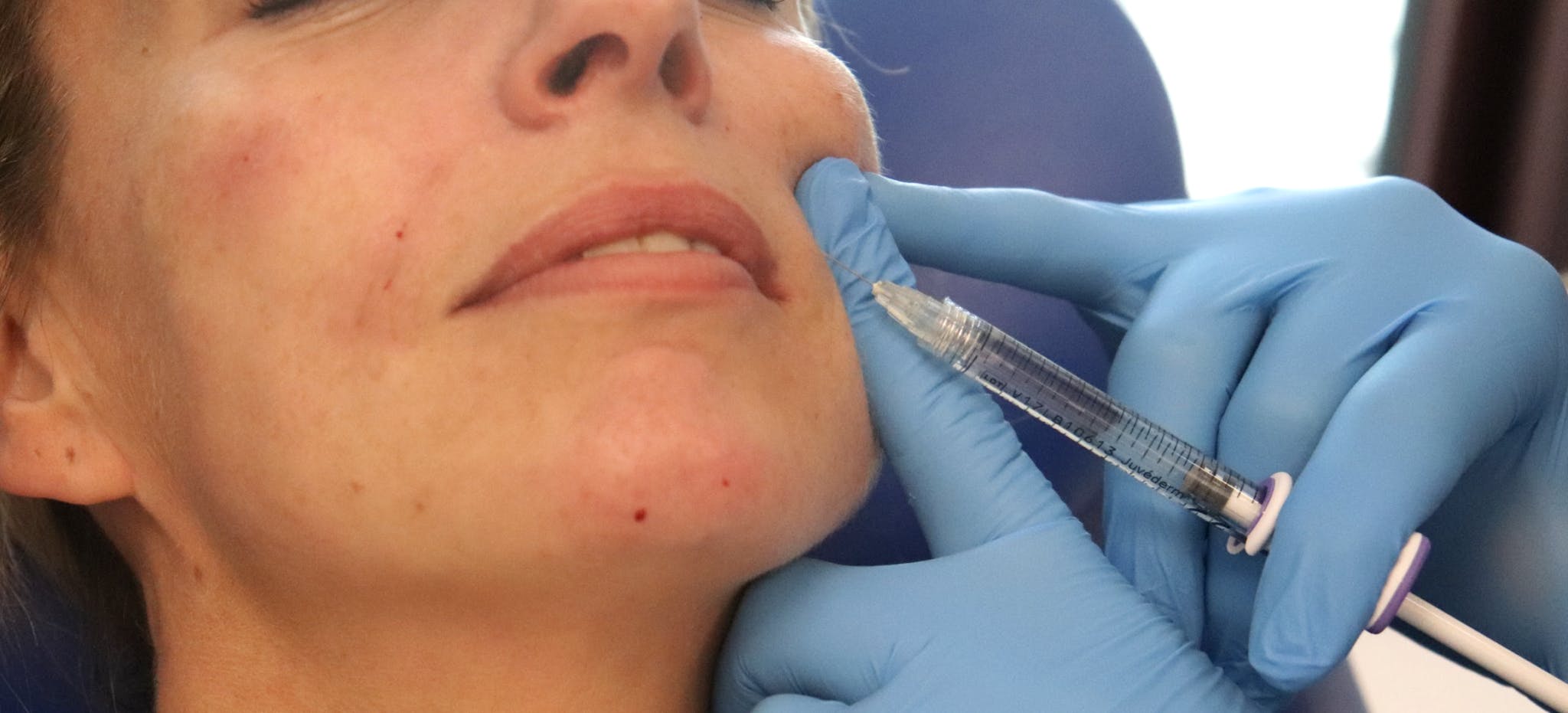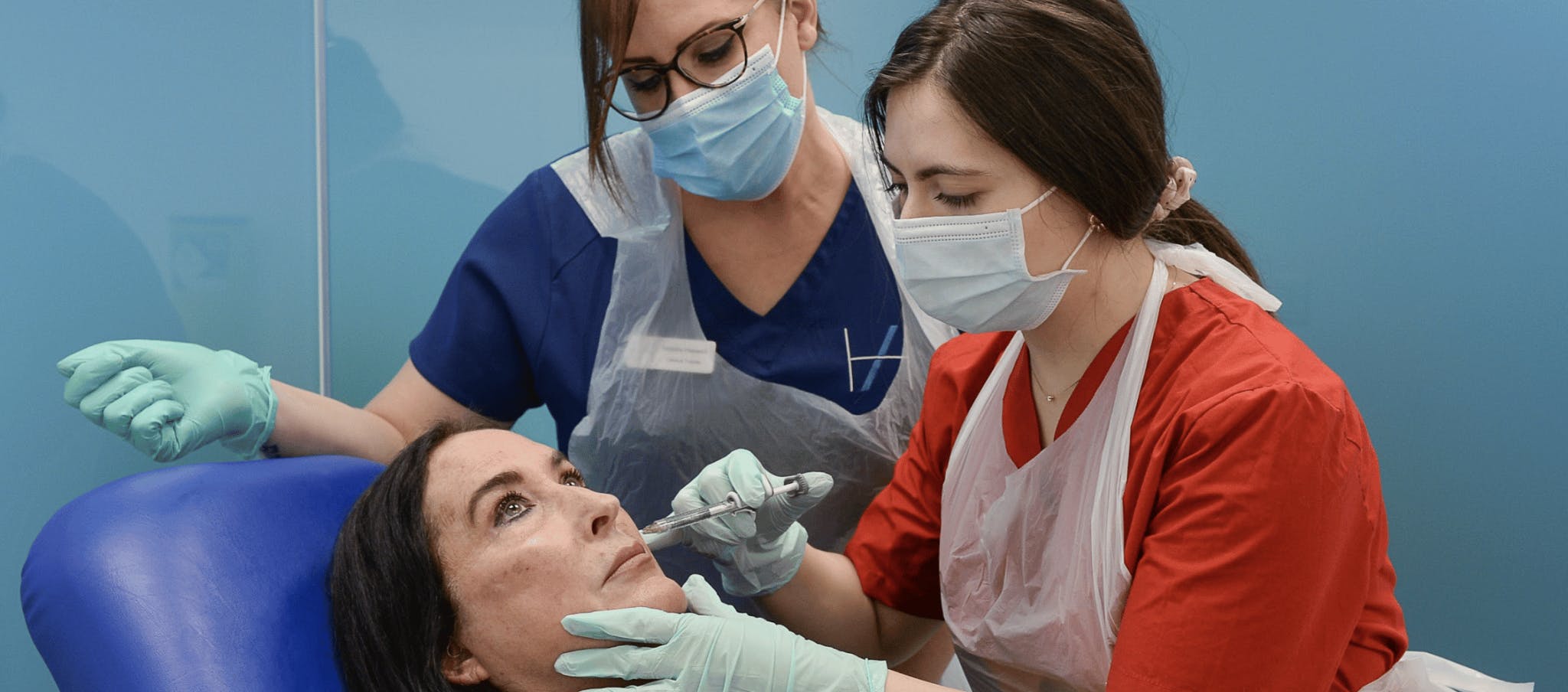Nasolabial Fold Filler Pop Quiz!

It’s Pop Quiz time again! This time we’re testing your knowledge of nasolabial fold filler.
Take the quiz below then scroll down for the answers and short explanations to see how you did...

NASOLABIAL FOLD FILLER POP QUIZ QUESTIONS...
1. What should you assess for and treat first in NLF patients?
A) Is piriform fossa treatment appropriate?
B) Is there mid-face volume loss?
C) Both A and B
2. When marking up your nasolabial fold patient, ensure they are…
A) Sitting upright
B) Lying down flat, face towards the ceiling
C) Lying down flat then turn their head to each side
3. Which technique offers the best results for nasolabial folds in layer 2
A) Fanning medial to the NLF
B) Retrograde linear threads lateral to the NLF
C) Retrograde linear threads inferior to the NLF
D) Fanning lateral to the NLF
4. Treat NLFs with a cannula where possible, using this gauge…
A) 22G
B) 25G
C) 27G

THE ANSWERS
1. What should you assess for and treat first in nasolabial fold patients?
The answer is C, Both A and B.
When consulting with your patient you should consider both mid-face volume loss and piriform fossa treatment.
If they present with mid-face volume loss – a common concern in nasolabial fold cases – then this should be addressed first.
When specifically assessing your patient’s nasolabial folds, consider whether piriform fossa treatment may be a better option. This can negate the need to treat the nasolabial folds directly.
2. When marking up your nasolabial fold patient, ensure they are…
The answer is A, Sitting upright.
When your patient sits upright you are better able to determine the area of increased volume. This is the result of hypertrophy and caudal descent of the nasolabial fat pad. Having your patient sit upright allows you to mark up your ‘no-go zone’ more effectively.
3. Which technique offers the best results for nasolabial folds in layer 2
The answer is A, Fanning medial to the nasolabial fold.
Fanning medial to the nasolabial fold is the best injecting technique to use here because this will treat the area of concern without adding volume to the hypertrophic region of the fold.
4. Treat NLFs with a cannula where possible, using this gauge…
The answer is A, 22G.
Once you feel confident using a cannula, this is recommended to reduce the likelihood of vascular occlusion. It also provides a more comfortable experience for your patient. When treating the nasolabial folds, a 22 gauge cannula should be used. A smaller cannula becomes sharp, just like a needle so bigger is better for safety reasons.

HOW DID YOU GET ON?
If you feel you need a better understanding of nasolabial fold filler and more practice in treating this area, check out the following aesthetics courses...
If you're a novice, The Aesthetic Accelerator will give you a thorough grounding in the theory and practice of fundamental botox and filler treatments. Whilst the majority of this course is online, you'll also enjoy three days of in-clinic practical training. During these days you'll get one-to-one hands-on mentoring from our dedicated team.
You'll experience a detailed, in-depth education in treating the nasolabial folds as part of our industry-leading Level 7 Diploma in Botox & Dermal Fillers course.
This Ofqual-regulated, Master’s level qualification offers a more detailed knowledge covering anatomical considerations, best practice injecting techniques, preventing and managing complications. This is complimented by unparalleled hands-on, one-on-one mentored injecting practice where you never share patients.
Healthcare professionals come to Harley Academy because we offer an incredible level of evidence-based education where safety and efficacy are paramount. We believe in an holistic approach where artistic injecting, that allows for natural looking results in every patient thanks to personalised treatments, is informed by solid medical knowledge and ethical aesthetics training.
To find out more about our courses for doctors, dentists, nurses, midwives, clinical pharmacists and dental therapists - and our approach to teaching aesthetic medicine - book a call with our Course Advisors.
All information correct at the time of publication - last updated August 2024
Download our full prospectus
Browse all our injectables, dermal fillers and cosmetic dermatology courses in one document
By submitting this form, you agree to receive marketing about our products, events, promotions and exclusive content. Consent is not a condition of purchase, and no purchase is necessary. Message frequency varies. View our Privacy Policy and Terms & Conditions
Attend our FREE open evening
If you're not sure which course is right for you, let us help
Join us online or in-person at our free open evening to learn more
Our Partners














STAY INFORMED
Sign up to receive industry news, careers advice, special offers and information on Harley Academy courses and services

